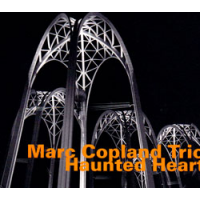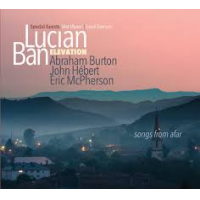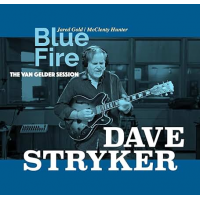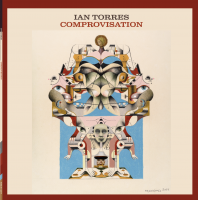Home » Jazz Articles » Multiple Reviews » Marc Copland: Zenith and Haunted Heart
Marc Copland: Zenith and Haunted Heart
 Zenith
Zenith InnerVoice Jazz
2016
There's some shared, ongoing history here. Between drummer Joey Baron and bassist Drew Gress, pianist Marc Copland has logged some pretty decent music time. Add trumpeter Ralph Alessi and there's a new element, one not found in the rhythm section's work with guitarist John Abercrombie or in the trio where Copland and Baron find themselves with bassist Gary Peacock. And Copland has also worked with the drummer and bassist in his own right. It's that sinewy structure that permeates Copland's new album on his new label. The new label is InnerVoice Jazz, the new record Zenith. And, apart from two tunes—one the suite-like, group-composed "Air We've Never Breathed"—and Duke Ellington's rarely heard 1931 composition "Mystery Song" (original title "The Mystery Song"), it's all Copland's.
Starting with the slow-moving "Sun At The Zenith," it could be the midnight hour as much as a standstill noon with the sun's blaring light and heat quieting everything else. As he demonstrates throughout, Alessi's trumpet is the bright color here, the trio providing a desert-like melodicism to this gently played number. The pace quickens naturally with "Mystery Song," the band giving the song a restless, roving treatment, swinging with an that overlay of restlessness laced with some seriously subdued funkiness. Everyone gets some solo time in with "Mystery Song," this spritely tune a kind of get-familiar number. From a poem by Bill Zavatsky of the same name (words enclosed with the package), "Air We've Never Breathed" is made up of three parts, "The Bass Knows," "Up And Over" and "Ups." The ballad-like qualities and tuneful gait of the first two pieces are replaced by a series of moorings that touch on free jazz, open-ended solo excursions, the music intimate, the sound of each instrument vividly heard. At 14 minutes, this suite suggests a flexing of the musical muscles that bypasses free jazz's atonalities in favor of more fanciful group cohesion, the strengths coming from the band's musical interactions, interactions that remain simple, straightforward, expressive, and all within the established three-part framework. Alessi's horn in the third section is particularly expressive, the piece's solemnity and quietude following some gentle playing from Baron a lyrical contrast.
"Waterfall" hearkens back to Nefertiti-era Miles Davis, as this up-tempo swinger skirts chord changes in favor of a spirited run (slowed eventually by countering solos from Gress and Baron), the quartet sounding like themselves even as they invoke that Davis band's late-'60s spirit. More mid-to-late-'60s invocations come with Copland's "Best Bet," the feel and 3/4 gait reminiscent of Herbie Hancock's "Little One," heard once again through Davis' musical prism, the group as a whole now sounding eerily closer to that band (minus saxophone), the song's gradual, quiescent ending dreamily similar. Hanging on a note, "Hurricane" combines the ease heard before with music more fitting of the song's title. Again, Alessi is the primary voice as the song ends the album on a more strident, forceful note, a curious mix of tunefulness with out-and-out blowing. Baron's playing is particularly strong as he adds heat to Alessi's own recital-like tone, Copland's entrance returning the music to a more serene place, the implied rock cadence now offering more a floating Latin pulse before adding some heat of his own (with Baron only so willing to assist). An aside, Zenith is one of roughly 30 CDs Copland has released as a leader just since 2000.
 Haunted Heart
Haunted Heart hatOLOGY
2010
While Zenith leans more toward a group sound and is less a platform for Copland's piano, another, older trio date with Gress and drummer Jochen Rueckert gives us a full flowering of the pianist's unique abilities to immerse himself in a world of standards, all of them ripe for this trio even as his piano remains front and center. Haunted Heart (2010) does include one of Copland's own, the ruminative "Dark Territory" as well as Sting's impressionistic "When We Dance," but the balance of this program of 11 songs is essentially devoted to a spirit of lush romanticism and expressive longing played through material that dates from at least a half century ago. I would contend that Haunted Heart is one of the finest trio dates we've heard thus far in this new century, Copland's rich treatments of classics like Howard Dietz and Arthur Schwartz's title track, Cole Porter's "Easy To Love" and three imaginative, highly intuitive interspersed renderings of the Rodgers and Hammerstein standard "My Favorite Things" definitive. Truth be told, we don't miss John Coltrane's tenor saxophone on their version of "Crescent" or Mal Waldron's piano on "Soul Eyes," Bill Evans' own piano with "Haunted Heart" or, indeed, Julie Andrews spirited singing on "My Favorite Things." And with Gress' incalculable bass accompaniment and Rueckert's sensitive drumming, maybe we've run out of space for a fuller treatment of this music. Suffice to say that a haunted version of Gershwin's "It Ain't Necessarily So," played here almost as a dirge, a blues in slow motion, is illustrative of Copland's uncanny knack for reconceptualizing these songs. The album, as a whole, could put a spell on you. If you let it.
Tracks and Personnel
Zenith
Track Listing: Sun At The Zenith; Mystery Song; Air We've Never Breathed: I. The Bass Knows, II. Up and Over, III. Lips; Waterfalls; Best Bet; Hurricane.
Personnel: Marc Copland: piano; Ralph Alessi: trumpet; Drew Gress: bass; Joey Baron: drums.
Haunted Heart
Tracks: My Favorite Things 1; Crescent; Dark Territory; Greensleeves; When We Dance; My Favorite Things 2; Soul Eyes; It Ain't Necessarily So; Easy To Love; Haunted Heart; My Favorite Things 3.
Personnel: Marc Copland, piano; Drew Gress, bass; Jochen Rueckert, drums.
Tags
Marc Copland
Multiple Reviews
John Ephland
Two for the Show Media
Innervoice Jazz
Joey Baron
Drew Gress
Ralph Alessi
Miles Davis
Herbie Hancock
Hatology
Jochen Rueckert
John Coltrane
Mal Waldron
Bill Evans
PREVIOUS / NEXT
Support All About Jazz
 All About Jazz has been a pillar of jazz since 1995, championing it as an art form and, more importantly, supporting the musicians who make it. Our enduring commitment has made "AAJ" one of the most culturally important websites of its kind, read by hundreds of thousands of fans, musicians and industry figures every month.
All About Jazz has been a pillar of jazz since 1995, championing it as an art form and, more importantly, supporting the musicians who make it. Our enduring commitment has made "AAJ" one of the most culturally important websites of its kind, read by hundreds of thousands of fans, musicians and industry figures every month.


















